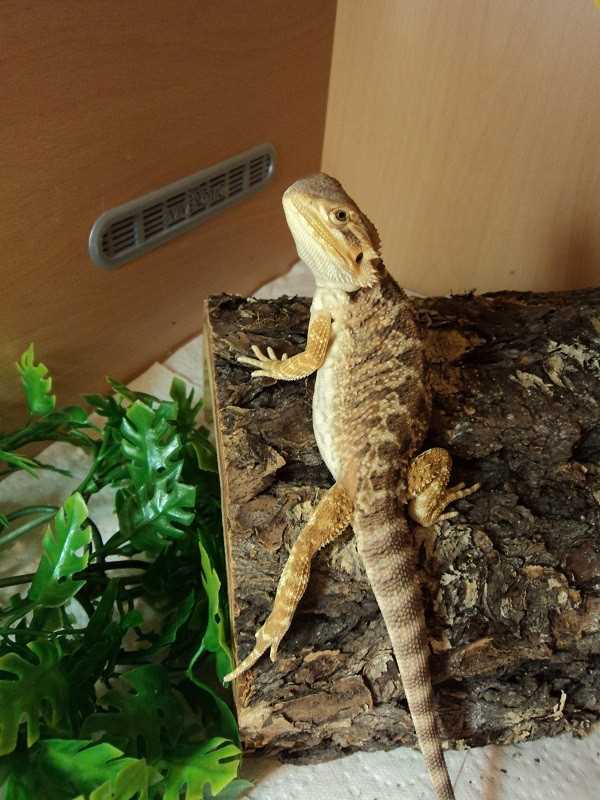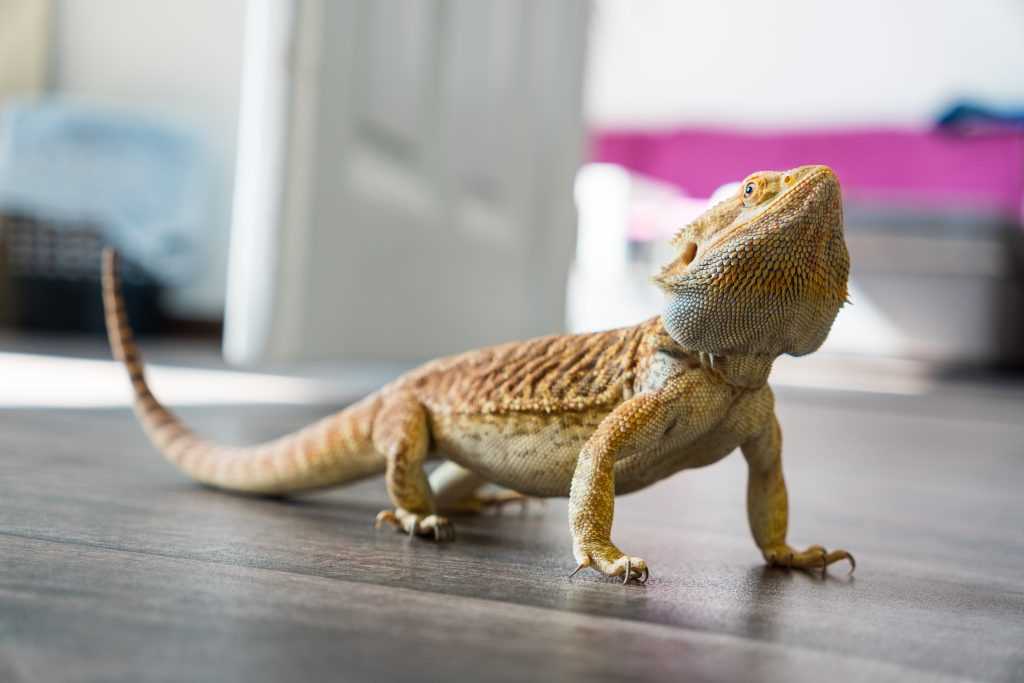If you are a proud owner of a bearded dragon, you may have noticed that at times, your beloved pet raises its tail in an upwards position. While this behavior may seem insignificant or random, it actually holds hidden meanings that can give you valuable insights into your beardie’s state of mind and overall well-being.
When a bearded dragon holds its tail up, it is often a sign of confidence and contentment. Just like a peacock displaying its feathers, your beardie is exuding a sense of pride and dominance in its environment. It is confident in its own abilities and is signaling to other animals that it is not to be messed with.
Another possible explanation for a bearded dragon holding its tail up is to regulate its body temperature. By positioning its tail towards a heat source, such as a basking spot or a heat lamp, your beardie is effectively controlling its body temperature. This posture allows it to absorb maximum heat and optimize its thermal regulation, keeping itself comfortable and healthy.
Tail Up: What Does it Mean?
One of the most common tail positions you may observe in your bearded dragon is when its tail is up. This position can indicate several different things, depending on the context.
1. Confidence: A bearded dragon with its tail held high is often a sign of confidence and contentment. It indicates that your dragon feels comfortable in its environment and is not feeling threatened.
2. Curiosity: A raised tail can also indicate curiosity. If your dragon is exploring its surroundings or investigating an object, it may raise its tail to get a better view or show its interest.
3. Alertness: When your dragon raises its tail, it can also be a sign of heightened alertness. It may be on the lookout for potential predators or other stimuli in its environment.
Interpreting Other Tail Positions
While a raised tail is a common tail position, bearded dragons can also hold their tails in other ways, each with its own meaning:
- Tail low: A dragon holding its tail low may be feeling relaxed or submissive.
- Tail curled: When your dragon curls its tail around its body, it can be a sign of stress or fear.
- Tail twitching: If your dragon’s tail is twitching, it may be a sign of excitement or anticipation.
- Tail wagging: Similar to a dog wagging its tail, a bearded dragon wagging its tail can indicate happiness or excitement.
Tail Up: What Does it Mean?
The Raised Tail

One common tail position that you may observe in your bearded dragon is when their tail is held up high. This position is often interpreted as a sign of alertness, excitement, or even aggression.
When a bearded dragon raises its tail, it typically indicates that it is on high alert and ready for action. This can be observed in various situations, such as when they spot potential prey, when they are feeling threatened, or when they are in breeding mode.
Aggression and Dominance

Warning Signs
The raised tail can also serve as a warning sign. When a bearded dragon feels threatened or uncomfortable, it may raise its tail as a way to communicate its discomfort to other animals or people. This is a signal that it is best to back off and give the bearded dragon some space.
Understand Your Bearded Dragon
Different Meanings of a Raised Tail
This raised tail position can have different meanings depending on the context and other body language signals being displayed by the bearded dragon. Here are a few possible interpretations of a raised tail:
1. Alertness and Curiosity:
When a bearded dragon’s tail is raised up, it can indicate that they are alert and curious about their surroundings. They may be focusing on something specific or trying to assess their environment for any potential threats or sources of food.
2. Dominance and Territory:
In some cases, a raised tail can be a display of dominance and territorial behavior. Male bearded dragons, in particular, may raise their tails as a way to assert their dominance over other reptiles or to mark their territory.
3. Warning or Threat:
In certain situations, a raised tail can be a warning or threat signal from a bearded dragon. This can occur if they feel threatened or are trying to intimidate a perceived threat, such as a predator or unfamiliar animal.
Interpreting Other Tail Positions
If your bearded dragon’s tail is hanging down or curved slightly downwards, it may be a sign of relaxation or contentment. This is often seen when the dragon is basking in the sun or enjoying a comfortable spot. A relaxed tail can also indicate that your bearded dragon is feeling safe and secure in its surroundings.
In some cases, a bearded dragon may hold its tail to one side. This can indicate a range of emotions depending on the context. For example, if the dragon’s tail is held to one side while it is basking in the sun, it may simply be trying to find a comfortable position. However, if the tail is held to one side during interaction with another bearded dragon or a human, it may be a sign of submission or insecurity.

I’m Lena Adams—a product of an unconventional upbringing in the African wilderness. My father, a daring explorer of African wildlife, sparked my fascination with reptiles, a passion that intertwined with the tragic loss of my mother during an expedition, leaving an indelible mark on my life. Driven to understand the creatures that captivated my parents, I embarked on my journey, sharing insights about reptiles, frogs, and lizards on my website. Through my explorations and conservation efforts, I honour my family’s legacy while seeking connections—to the creatures, nature, and the mother whose presence I yearn to understand.
